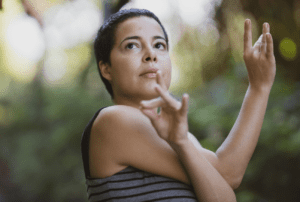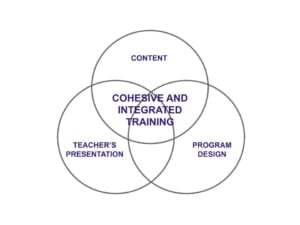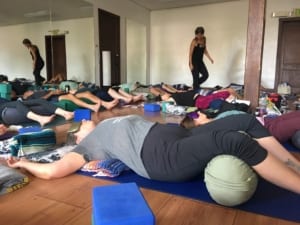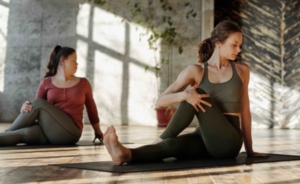As part of Denver Yoga Underground’s yoga teacher training, students are required to attend five classes outside of the formal program. They then submit a written reflection on their experience. Here is an example of the process, this student learned to become a better yoga teacher through observation.
In total, I attended three Vinyasa yoga classes, one Iyengar yoga class and a Hot Power Yoga class. Overall, I learned that a clear theme for a class is essential as is the teacher’s use of language.
For the purposes of this exercise, I took a wide range of classes including a “goat yoga” class. The goats freely interacted with students during the class. The teacher renamed poses like downward goat instead of downward dog, which complemented the theme. The pace of the class was slower to allow time for a goat to crawl onto or off of a person. The class was silly and fun however I would not go there to learn about the deeper meaning of yoga. It felt more like a visit to the county fair with some “yoga poses” mixed in. It was more amusing than enlightening.
It felt more like a visit to the county fair
with some “yoga poses” mixed in.
The goat class had a clear intent, to generate a novel experience. Other classes presented an odd mixture of unrelated intentions. I most appreciated classes that stayed within the parameters of their stated theme. The Iyengar yoga class I attended had a clearly defined theme. This was the first time I participated in a class deconstructed a single pose with such detail. As a prospective yoga teacher, I was reminded of the many ways people can hone in on their craft.
The theme of a class, and the quality of instruction can either make one feel grounded or disoriented. Yoga is a potent medicine. I can even create a new destiny. Most of the time the result is positive however if the medicine is used in the wrong way, it can make someone anxious or imbalanced.
Yoga is a potent medicine.
Through this exercise, I learned the importance of language as a yoga teacher, how to pace a class, and why it is essential to have a clear theme. Overall, I learned to be a better yoga teacher through observation.






 What is the content of a
What is the content of a 
